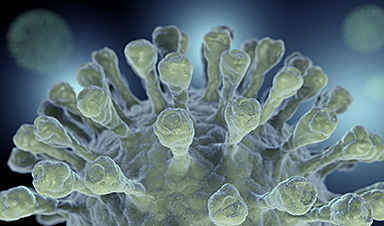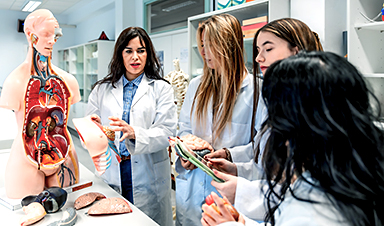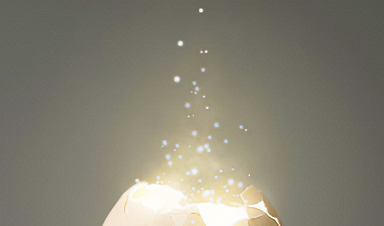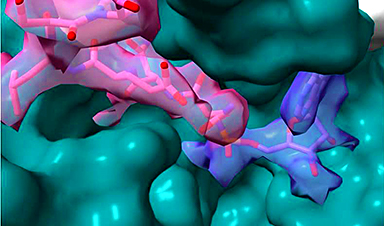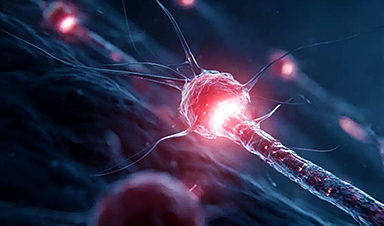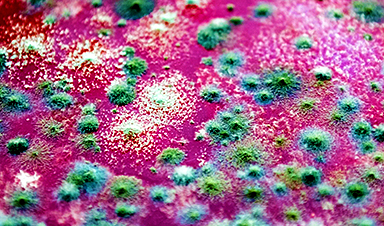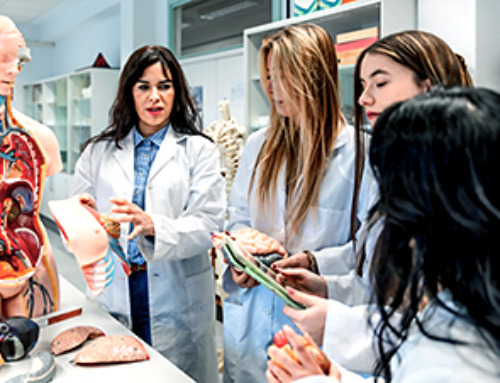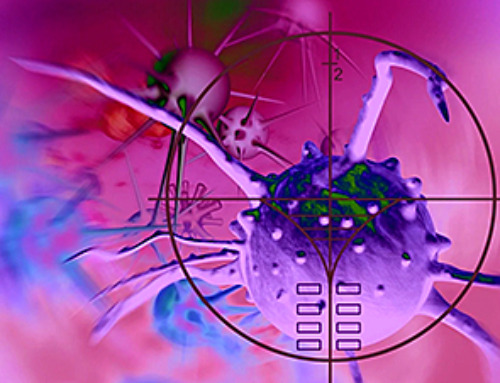| (Nanowerk News) Researchers from the IBB-UAB have developed a new class of nanostructures capable of trapping and neutralising large quantities of the SARS-CoV2 virus particles, both in liquid solutions and on the surface of materials. These novel nanoparticles could be used to manufacture antiviral materials such as wastewater and air filters, and could be exploited to develop new tests for the early detection of Covid-19. Moreover, the nanoparticles could be redesigned to target other pathogens. | |
| The study was led by researchers from the Institute for Biotechnology and Biomedicine of the Universitat Autònoma de Barcelona (IBB-UAB), who highlight the potential of the developed nanostructures for the manufacturing of new antiviral materials. | |
| The study was published in the journal Advanced Healthcare Materials (“Protein Nanoparticles for Targeted SARS-CoV-2 Trapping and Neutralization»”). | |
| The new nanoparticles, called LCB1-NPs and LCB3-NPs, are formed by repeats of three proteins, which are joined together thanks to the self-assembly properties of one of the three, called ZapB. In the genetic engineering strategy that was implemented, the researchers fused ZapB with the mCherry protein, which confers red fluorescence to the nanoparticles, and to this union they added the LCB1 and LCB3 proteins, which provide the ability to bind and neutralise the SARS-CoV-2 virus. Thus, by forming these nanostructures, it was possible to localise all these functions in a single nanoparticle. | |
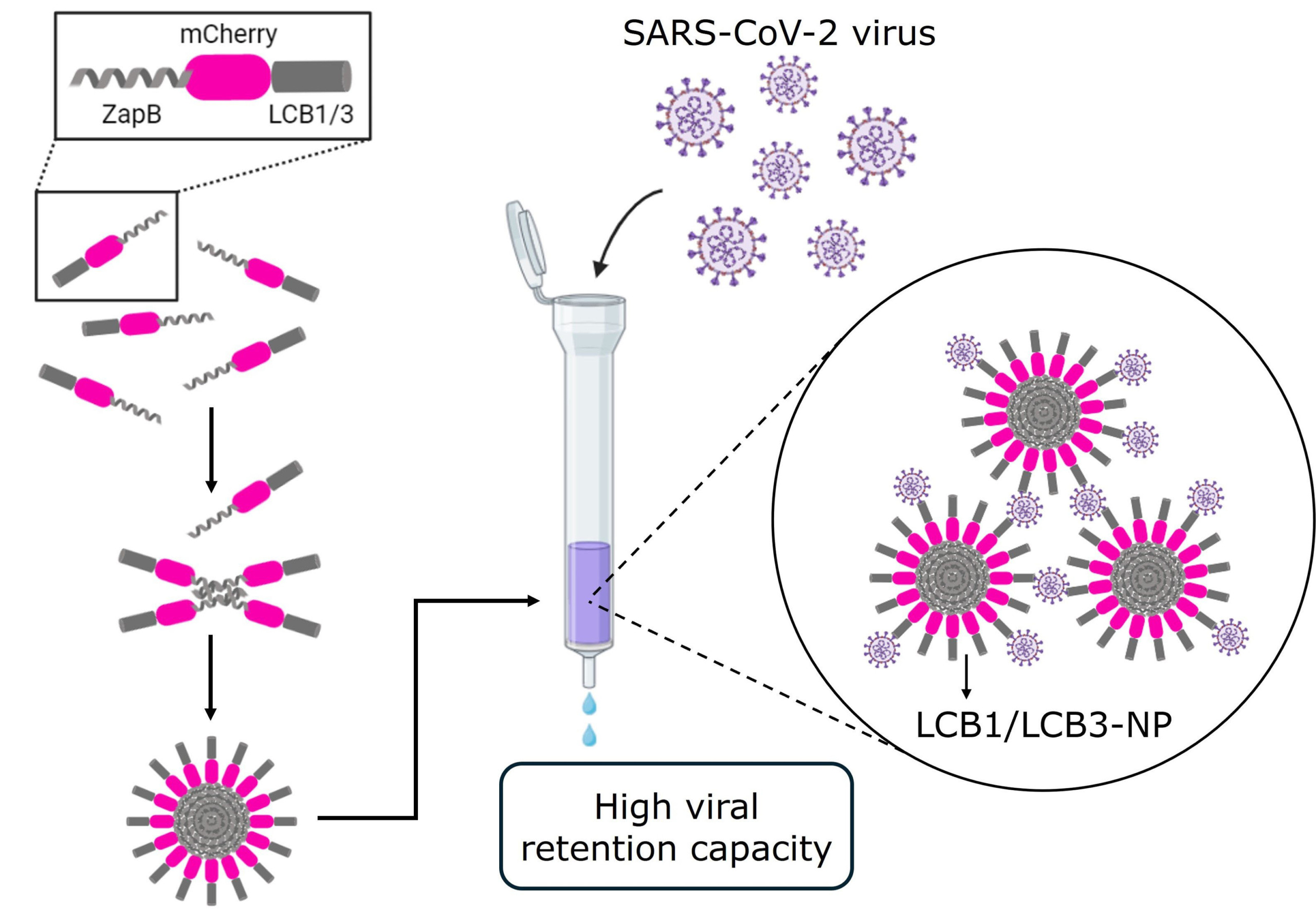 |
|
| Illustration of the formation of the new nanoparticles, LCB1-NPs and LCB3-NPs, designed by the IBB-UAB researchers. (Image: IBB-UAB) | |
| The researchers underscore the high affinity of the nanoparticles to bind to the viral spike protein that allows SARS-CoV2 internalization into cells. This process enables the nanoparticles to neutralise the infection in both liquid solutions and immobilised on a surface. This demonstrates the great versatility of this new antiviral nanomaterial, paving the way for its utilisation in a multitude of applications. | |
| “Each nanoparticle is composed of many LCB1 or LCB3 proteins, resulting in a high density of SARS-CoV-2 binding sites that allow each nanoparticle to bind to more than one virus. This greatly increases their potential as an antiviral material compared to other materials in which each nanostructure can only bind to one single particle of the virus,” explains IBB-UAB researcher Marc Fornt, first author of the study. | |
| The red fluorescence makes it easier to track and localize the nanoparticles with the naked eye, which makes them much easier to handle. | |
| An experiment using the nanoparticles to engineer a virus filter has allowed the researchers to demonstrate the ability of this new nanomaterial to trap and neutralise large quantities of SARS-CoV-2. Among its applications are the filtering of wastewater containing secretions from patients affected by Covid-19 to prevent them from reaching the water system, and the filtering of air in sensitive areas such as hospital wards. The nanoparticles could also be used in the manufacturing of new ultra-sensitive detection tests to diagnose the disease in the early stages of infection, when the viral load is still very low. | |
| “These new nanoparticles are also of great interest for the industrial production of antiviral materials due to the simplicity, speed and low cost involved in making them,” says IBB-UAB researcher and director of I3PT Salvador Ventura, who coordinated the study. | |
| The modular system through which the nanostructures were generated allows the protein that recognises and neutralises SARS-CoV-2 to be replaced by proteins that recognise other pathogens of interest. “This flexibility provides a solid framework for the generation of new materials to combat potential emerging infectious diseases effectively and rapidly, particularly if combined with recent advances in de novo protein design,” concludes Salvador Ventura. |
| Source: Universitat Autònoma de Barcelona (Note: Content may be edited for style and length) |
News
Repurposed drugs could calm the immune system’s response to nanomedicine
An international study led by researchers at the University of Colorado Anschutz Medical Campus has identified a promising strategy to enhance the safety of nanomedicines, advanced therapies often used in cancer and vaccine treatments, [...]
Nano-Enhanced Hydrogel Strategies for Cartilage Repair
A recent article in Engineering describes the development of a protein-based nanocomposite hydrogel designed to deliver two therapeutic agents—dexamethasone (Dex) and kartogenin (KGN)—to support cartilage repair. The hydrogel is engineered to modulate immune responses and promote [...]
New Cancer Drug Blocks Tumors Without Debilitating Side Effects
A new drug targets RAS-PI3Kα pathways without harmful side effects. It was developed using high-performance computing and AI. A new cancer drug candidate, developed through a collaboration between Lawrence Livermore National Laboratory (LLNL), BridgeBio Oncology [...]
Scientists Are Pretty Close to Replicating the First Thing That Ever Lived
For 400 million years, a leading hypothesis claims, Earth was an “RNA World,” meaning that life must’ve first replicated from RNA before the arrival of proteins and DNA. Unfortunately, scientists have failed to find [...]
Why ‘Peniaphobia’ Is Exploding Among Young People (And Why We Should Be Concerned)
An insidious illness is taking hold among a growing proportion of young people. Little known to the general public, peniaphobia—the fear of becoming poor—is gaining ground among teens and young adults. Discover the causes [...]
Team finds flawed data in recent study relevant to coronavirus antiviral development
The COVID pandemic illustrated how urgently we need antiviral medications capable of treating coronavirus infections. To aid this effort, researchers quickly homed in on part of SARS-CoV-2's molecular structure known as the NiRAN domain—an [...]
Drug-Coated Neural Implants Reduce Immune Rejection
Summary: A new study shows that coating neural prosthetic implants with the anti-inflammatory drug dexamethasone helps reduce the body’s immune response and scar tissue formation. This strategy enhances the long-term performance and stability of electrodes [...]
Scientists discover cancer-fighting bacteria that ‘soak up’ forever chemicals in the body
A family of healthy bacteria may help 'soak up' toxic forever chemicals in the body, warding off their cancerous effects. Forever chemicals, also known as PFAS (per- and polyfluoroalkyl substances), are toxic chemicals that [...]
Johns Hopkins Researchers Uncover a New Way To Kill Cancer Cells
A new study reveals that blocking ribosomal RNA production rewires cancer cell behavior and could help treat genetically unstable tumors. Researchers at the Johns Hopkins Kimmel Cancer Center and the Department of Radiation Oncology and Molecular [...]
AI matches doctors in mapping lung tumors for radiation therapy
In radiation therapy, precision can save lives. Oncologists must carefully map the size and location of a tumor before delivering high-dose radiation to destroy cancer cells while sparing healthy tissue. But this process, called [...]
Scientists Finally “See” Key Protein That Controls Inflammation
Researchers used advanced microscopy to uncover important protein structures. For the first time, two important protein structures in the human body are being visualized, thanks in part to cutting-edge technology at the University of [...]
AI tool detects 9 types of dementia from a single brain scan
Mayo Clinic researchers have developed a new artificial intelligence (AI) tool that helps clinicians identify brain activity patterns linked to nine types of dementia, including Alzheimer's disease, using a single, widely available scan—a transformative [...]
Is plastic packaging putting more than just food on your plate?
New research reveals that common food packaging and utensils can shed microscopic plastics into our food, prompting urgent calls for stricter testing and updated regulations to protect public health. Beyond microplastics: The analysis intentionally [...]
Aging Spreads Through the Bloodstream
Summary: New research reveals that aging isn’t just a local cellular process—it can spread throughout the body via the bloodstream. A redox-sensitive protein called ReHMGB1, secreted by senescent cells, was found to trigger aging features [...]
AI and nanomedicine find rare biomarkers for prostrate cancer and atherosclerosis
Imagine a stadium packed with 75,000 fans, all wearing green and white jerseys—except one person in a solid green shirt. Finding that person would be tough. That's how hard it is for scientists to [...]
Are Pesticides Breeding the Next Pandemic? Experts Warn of Fungal Superbugs
Fungicides used in agriculture have been linked to an increase in resistance to antifungal drugs in both humans and animals. Fungal infections are on the rise, and two UC Davis infectious disease experts, Dr. George Thompson [...]
